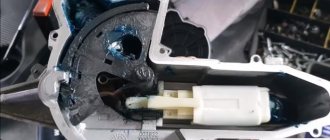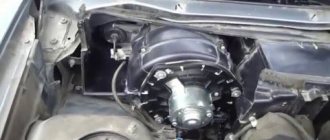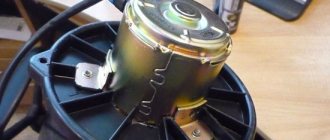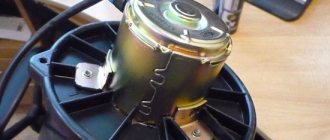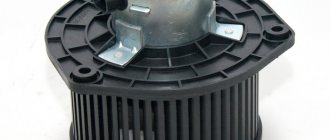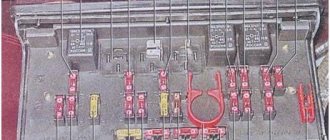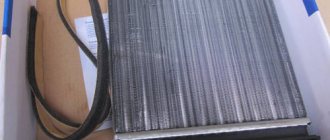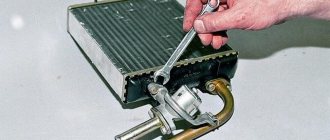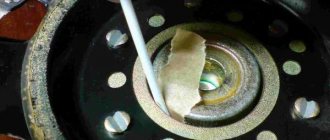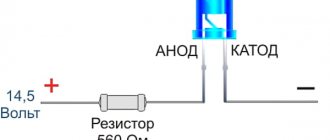April 30, 2020 Lada.Online 125 857 25
One of the differences between the Vesta and XRAY heater and other Lada cars (for example, Grants or Prioras) is that the cabin filter is installed after the fan. This design feature makes it easy for debris and dirt to get into the blades, which causes extraneous noise (whistle, howl, rustle) or vibration.
The Lada Vesta car has a stove heater…
...designed to heat the car interior. The stove is also actively used during rain or cold weather.
The heater is also activated if necessary to quickly remove fogging from the windows or warm up passengers. In the “Lux” configuration, the car is additionally equipped with air conditioning, which creates a favorable temperature for a person.
The most common malfunctions of the Lada Vesta heater radiator: leakage, fan noise, engine vibration. The replacement process is not complicated, but requires care on the part of the repairman.
Lada X Ray
You can independently eliminate the noise of the Lada X-Ray heater fan using one of 2 options:
- Through the top panel in the glove box;
- Through the cabin filter.
First way
Compared to Vesta, it is noticeably simpler due to the fact that you do not have to dismantle several components at once, although it is not as convenient to work with.
First you need to remove the top panel in the glove box on which the lamp is located.
The motor itself is on the left. To remove the impeller, you need to lightly press the top plastic lock and carefully turn the fan counterclockwise.
It is worth noting that it will not be possible to completely remove the motor, since this will require disassembling part of the dashboard. However, even the indicated hole is enough to clean the blades with a thin screwdriver wrapped in cloth.
How the stove works on Lada Vesta. Device
- The heater radiator is connected to the system main via rubber pipes. The heat emitted by the internal combustion engine is transferred to the heating system.
- The heating system radiator distributes heat throughout the car interior using an electric fan.
- A preset resistor online regulates the fan rotation speed.
- The air flow is circulated and cleaned by a mesh and cabin filter (see diagram).
- With the help of installed dampers, the driver and passengers regulate the air flow flowing to them.
- The gearmotor rotates the damper based on the readings of the regulator and heater sensors.
Checking the stove dampers
As you already know, air is pumped into the interior of the Lada Vesta by an electric fan through air ducts. It would be possible to drive air directly without using air pipes. However, then it would be impossible to regulate the speed and direction of air flows. For the orderly movement of air masses, an air flow distribution damper is used, which is located between the fan and the outlet from the air duct. There are several of the latter on the dashboard, and accordingly there are the same number of dampers.
Like any mechanism, the dampers that distribute air fail. To detect it, we will check the maximum power of the Lada heating device. This is exactly how the malfunction makes itself felt most easily.
If the volume of incoming gas does not change when moving the mode control lever. This means that the motion limiter does not operate. Most likely, the signal is lost along the way (electric drive). If you hear a creaking or noise when switching the heating mode. Lubricate the dampers with a lubricant containing silicone. Why do windows fog up?
When there is a large difference in temperature or humidity inside the cabin, a coating of water droplets forms on the glass. This is a very dangerous condition - the driver cannot see the road. One of the main functions of the stove is to quickly remove fogging. To do this, several air duct nozzles are directed at the windshield, as well as the side windows of the Lada Vesta. The luxury version also uses heated mirrors.
A working device quickly restores the windows to their normal state. This is achieved by supplying hot air to the surface. Therefore, if Vesta’s windows do not fog up, the reason for this is a faulty radiator.
Typical stove malfunctions
The most common problems with the stove on Lada Vesta are the following:
- the actual temperature does not correspond to the set one - low level of antifreeze (antifreeze), clogged radiator pipes or the formation of an air lock, which causes cold air to blow;
- vibration appears during operation - the electric motor is loose;
- insufficient air flow from the deflectors - clogging of channels and air ducts;
- the heater is inactive when it is activated on the dashboard - failure of the fuse (No. 14) of the mounting block.
Checking the stove fan
During the circulation of the air flow, dust particles settle on the surface of the impeller, as a result of which it begins to make noise and extraneous sounds appear.
To clear the fan blades of debris, it is necessary to provide access to the unit.
- Unsnap the glove box.
- Remove the filter element.
- On the right is the furnace mechanism. We press the plastic clips and turn the impeller counterclockwise.
- We remove the motor.
- We wipe the drive with a rag.
- Install the parts in reverse order.
Checking the stove dampers
Dampers are installed in the area between the deflectors and the fan. During operation, they fail, become deformed, and become damaged. Checking the serviceability of the damper on your own is quite simple: you need to activate the stove at maximum speed. If it doesn't blow well, it means the air duct is clogged. Change the damper positions. If you hear squeaking or noise, lubricate the moving parts with silicone grease.
Foggy windows when the heater is activated is the first sign of a ventilation problem. This problem provokes a sharp decrease in visibility on the road and an increase in the risk of an emergency. As soon as fogging is detected, check the condition of the ventilation; most likely, the air ducts are clogged.
Checking heating efficiency
Carry out prevention before the onset of winter. Be sure to check:
- heating the air;
- changing speed modes when switching the control lever, if necessary, replace the brushes of the stove motor;
- absence of extraneous noise, whistling in fan operation;
- the need for a time interval to warm up the air ducts.
How to clean a Vesta heater fan
One of the differences between the Vesta and XRAY heater and other Lada cars (for example, Grants or Prioras) is that the cabin filter is installed after the fan. This design feature makes it easy for debris and dirt to get into the blades, which causes extraneous noise (whistle, howl, rustle) or vibration.
If the car is under warranty, it makes sense to contact the dealer to troubleshoot the problem. Further instructions for those who decide to deal with the problem themselves.
[pp_youtube src=»https://www.youtube.com/embed/KoWPZgeQIOk?feature=oembed» ]
Over 10,000 km, dust accumulates on the fan blades; the thickness of this layer can be several millimeters. Also, pieces of debris (a twig, leaf, etc.) may get stuck between the blades. All this causes imbalance during rotation. Sometimes at speed 4 of the stove the vibration is so strong that it causes noise and is even transmitted to the steering wheel of the car. And the leaves in the impeller create an unbearable rustling and whistling sound.
The main task is to clean the heater fan from dust and dirt. To check vibrations, you can connect a motor from a battery. If necessary, to reduce vibrations, we rearrange the balancing weights to other blades.
[pp_youtube src=»https://www.youtube.com/embed/OOaBR9izx5s?feature=oembed» ]
It is also proposed to slightly modify the design (to reduce the vibrations transmitted by the fan) - stick an anti-creak (madeline) on the edges.
[pp_imgslider srcs=»https://club-lada-vesta.ru/wp-content/uploads/2020/05/pp_image_70_v7nflz1mxt1476764240_v1.jpg,https://club-lada-vesta.ru/wp-content/uploads/2020 /05/pp_image_71_k0i1kexemt1476764245_v2.jpg,https://club-lada-vesta.ru/wp-content/uploads/2020/05/pp_image_72_5slzhh91yt1476764211_v3.jpg"]
[pp_youtube src=»https://www.youtube.com/embed/L_EuuG_E8E0?feature=oembed» ]
- Remove the top panel in the glove compartment.
- Remove the impeller from the housing (press the petal on top and turn the motor slightly counterclockwise).
- It is not possible to completely pull the motor out through this hole, so we clean it with a suitable tool (for example, a flat-head screwdriver) without removing the fan.
[pp_imgslider srcs=»https://club-lada-vesta.ru/wp-content/uploads/2020/05/pp_image_73_jzfoa1z3nt1511855793_1.jpg,https://club-lada-vesta.ru/wp-content/uploads/2020 /05/pp_image_74_clndt4wtpt1511855846_2.jpg,https://club-lada-vesta.ru/wp-content/uploads/2020/05/pp_image_75_g7ewi7vxut1511855826_3.jpg,https://club-lada-vesta.ru/wp-content/uploads /2020/05/pp_image_76_w16dxu02ot1511855848_4.jpg"]
Method 2: Remove the cabin air filter and place a cloth at the front passenger's feet. Remove the frill from the passenger side and insert the air conditioner cleaner tube (the canister costs about 700 rubles) into the air intake. Turn on the stove and release the foam.
And to prevent leaves and other small objects from getting in, install a protective mesh on the air intake in the engine compartment. Let us remind you that in this article you can leave reviews about the operation of the Vesta stove.
One of the differences between the Vesta and XRAY heater and other Lada cars (for example, Grants or Prioras) is that the cabin filter is installed after the fan. This design feature makes it easy for debris and dirt to get into the blades, which causes extraneous noise (whistle, howl, rustle) or vibration.
If the car is under warranty, it makes sense to contact the dealer to troubleshoot the problem. Further instructions for those who decide to deal with the problem themselves.
1. On Lada Vesta.
You will need to remove the heater fan.
[pp_youtube src=»https://www.youtube.com/embed/KoWPZgeQIOk?feature=oembed» ]
Over 10,000 km, dust accumulates on the fan blades; the thickness of this layer can be several millimeters. Also, pieces of debris (a twig, leaf, etc.) may get stuck between the blades. All this causes imbalance during rotation. Sometimes at speed 4 of the stove the vibration is so strong that it causes noise and is even transmitted to the steering wheel of the car. And the leaves in the impeller create an unbearable rustling and whistling sound.
The main task is to clean the heater fan from dust and dirt . To check vibrations, you can connect a motor from a battery. If necessary, to reduce vibrations, we rearrange the balancing weights to other blades.
[pp_youtube src=»https://www.youtube.com/embed/OOaBR9izx5s?feature=oembed» ]
It is also proposed to slightly modify the design (to reduce the vibrations transmitted by the fan) - stick an anti-creak (madeline) on the edges.
[pp_youtube src=»https://www.youtube.com/embed/L_EuuG_E8E0?feature=oembed» ]
- Remove the top panel in the glove compartment.
- Remove the impeller from the housing (press the petal on top and turn the motor slightly counterclockwise).
- It is not possible to completely pull the motor out through this hole, so we clean it with a suitable tool (for example, a flat-head screwdriver) without removing the fan.
Method 2: Remove the cabin air filter and place a cloth at the front passenger's feet. Remove the frill from the passenger side and insert the air conditioner cleaner tube (the canister costs about 700 rubles) into the air intake. Turn on the stove and release the foam.
And to prevent leaves and other small objects from getting in, install a protective mesh on the air intake in the engine compartment. Let us remind you that in this article you can leave reviews about the operation of the Vesta stove.
Replacing a stove radiator with your own hands on a Lada Vesta
Preparation of the workplace, necessary tools:
- rags;
- Phillips head screwdriver;
- flashlight to increase visibility;
- new radiator.
How to remove a radiator. Replacement sequence:
- We turn off the engine, turn off the ignition, and squeeze the parking brake.
- Open the hood and remove the terminal from the battery.
- We grind off the antifreeze from the system. The plug is located at the bottom point of the radiator (key 17).
- We remove the decorative trim on the instrument panel.
- Remove the top decorative trim above the glove box. Let's take it out.
- We dismantle the metal dashboard support on the driver's side.
- Remove the air pipe.
- Open the stove lid.
- We remove the heater.
- We install a new heater radiator.
- We assemble the structure in reverse order.
AVTOVAZ methodology
To eliminate vibration of the interior heater fan, it is necessary to carry out work in accordance with the procedure.
1. Place the car in the workplace, brake with the parking brake, open the hood, disconnect the earth wire terminal from the battery (spanner 10).
2. Remove the heater fan, Figure 1, in accordance with the requirements of the technological instructions for the corresponding car model:
- TI 3100.25100.20546 “Body of LADA Largus cars - removal / installation of main components and parts”;
- TI 3100.25100.20589 “LADA Vesta car body – removal / installation of main components and parts”;
- TI 3100.25100.20599 “LADA X-Ray car body – removal/installation of main components and parts.”
Figure 1 – Heater fan
3. Blow out the heater fan impeller, Figure 2, with compressed air to remove dust, dirt and foreign objects (compressed air blow gun).
4. Wash the heater fan impeller with a cleaning solution to remove any remaining dust and dirt, avoiding contact of the cleaning solution with the heater fan motor (technological container, brush, wiping cloth, cleaning solution - water, liquid soap).
Figure 2 – Places where dust accumulates on the heater fan impeller
5. Use a rag to wipe off the remaining cleaning solution from the heater fan impeller (wiping rag).
6. Install the heater fan on the car in accordance with the requirements of the technological instructions for the corresponding car model.
7. Connect the earth wire terminal to the battery (spanner 10).
8. Turn on the ignition, turn on the heater fan at 2nd and higher speeds, make sure that there is no increased vibration of the fan in all operating modes. Turn off the fan and ignition.
And to prevent leaves and other small objects from getting in, install a protective mesh on the air intake in the engine compartment. Let us remind you that in this article you can leave reviews about the operation of the Vesta stove.
Photo: Phantom70 logbook and alexpalshin
Keywords: Lada Vesta stove | Lada Xray stove | air conditioner Lada Vesta | air conditioner lada xray | stove Lada Largus | air conditioner Lada Largus | AvtoVAZ order
0 0 0 0 0 0
Share on social networks:
Review of Manufacturer Prices
Dimensions: 184x133.5x26 mm.
| Serial number/item | Price in rubles |
| LUZAR 271153553R (original) | From 5000 |
| STELLOX 10-35126-SX | From 4500 – 4700 |
| FENOX RO0004C3 | From 4500 – 4700 |
| RO0003O7 | From 4500 – 4700 |
| AVA QUALITY COOLING RTA6398 | From 4500 – 4700 |
| VALEO 812374 | From 4500 – 4700 |
| NISSENS 76512 | From 4500 – 4700 |
| MAGNETI MARELLI 350218221003 | From 4500 – 4700 |
| *prices are as of May 2022 | |
Checking heating efficiency
_x000D_
_x000D_
We start the engine and warm it up to operating temperature. We check that the inlet and outlet pipes of the heater radiator are heated and have approximately the same temperature. If the pipes have different temperatures, then it is possible:
_x000D_
- _x000D_
- low coolant level in the expansion tank (which antifreeze is better)
_x000D_
An air lock has appeared in the engine cooling system (air can be released through a special valve)
_x000D_
Heater radiator clogged (replace)
_x000D_
_x000D_
_x000D_
We install the temperature regulator on the stove control unit all the way to the red zone. We make sure that the temperature of the air leaving the panel deflectors begins to rise. If it blows cold, it means:
_x000D_
- _x000D_
- the damper drive is faulty (the damper does not open, preventing air from passing through the heater radiator)
_x000D_
The heater control unit is faulty (how to remove)
_x000D_
_x000D_
Vesta stove blows cold through all air ducts
Regardless of the configuration and type of climate control equipment, cold air from the stove can indicate only a few faults equally:
- Low antifreeze level. There is nothing easier than checking the level and topping up if necessary, observing the tolerances and brand of liquid. After this, it is better to warm up the car and make sure that the heater starts to warm up. If everything is in order, you don’t have to read further.
- Air lock in the cooling system. A very common malfunction on Tolyatti cars. As a rule, a plug occurs when the system is depressurized or when antifreeze is replaced using the wrong technology. In this case, the air plug simply prevents the heated antifreeze from reaching the heater radiator. We described in detail how to get rid of an airlock here and here.
- Dirty cabin filter. Everything is clear here - air simply does not flow to the heater radiator, so there is nothing to blow through the interior. Replacing the cabin filter on a Lada Vesta, unlike a Granta, Priora or Kalina, is much easier. The filter is carefully removed from the cassette, then a new one is inserted.
- Clogged heater radiator.
The symptoms are the same as in the case of an air lock: antifreeze does not get into the heater radiator or the radiator throughput is so small that the liquid does not have time to warm it up. New branded heater radiator Lada Vesta
The best option is to remove and wash the heater radiator. It's a lot of work, but it's worth it. On the other hand, you can flush the radiator without disassembling it, right on the car. How to clean a honeycomb radiator without dismantling is described here, and the most correct, but time-consuming method of washing is described here.
The engine takes a long time to warm up or does not warm up to operating temperature. In severe frosts, even plugs on the engine air intakes (car blankets, plugs) do not help solve the problem. The thermostat is the only culprit here. It is necessary to check its operation and replace it if necessary. How to do this is described here.
Replacing the Lada Largus heater motor (VAZ Largus)
In order to feel comfortable in a car at any time of the year, it is necessary to monitor the health of its heating system, or in other words, the “stove”. Such a system is responsible for the heating, cooling and air circulation functions in the cabin. Since we have not yet created a car that is 100% protected from malfunctions, you must know how to do such work with your own hands as replacing the heater motor on a Renault Logan.
It cannot be said that the Renault Logan ventilation and heating system is a weak point, but such a malfunction, especially in the cold season, promises unpleasant consequences. The operating principle of the interior heating system does not differ significantly from the device in other cars. But if the rear window heating does not work, then this can also spell trouble.
The heater radiator is connected directly to the cooling system, in which the coolant circulates (coolant, about replacing it here, about choosing a coolant here), which warms up within 95°C during engine operation. A special fan blows onto the hot radiator, which creates a strong air flow and directs it into the cabin through special air ducts. The quantity and speed of supply of heated air is regulated using a damper.
Signs of a malfunctioning stove
You should think about the upcoming repair and replacement of the stove motor if the following malfunctions are observed in its operation:
- An extraneous noise appeared when the stove was turned on.
- Warm air stopped flowing into the cabin.
- The speed of the incoming air flow has decreased.
- And of course, if the stove does not turn on at all. (However, in the event of such a malfunction, first of all analyze the condition of fuse F36, which is located inside the car. It is located in the green housing and is responsible for short-circuit protection of the heater system).
Removing the heater system
Most Renault Logan owners are convinced that replacing the heater motor requires completely dismantling the front panel. The same position is described in the car repair and operation manual. Since such a process is quite expensive and inconvenient, many owners prefer to leave this problem unresolved. However, in reality, to dismantle the housing with the heater fan, it is enough to unscrew only a couple of screws. You can handle a similar task with your own hands.
But at the very beginning, make sure that the cabin filter is clean; sometimes, due to its contamination, air cannot get into the cabin. The filter is installed on the right side of the front panel.
If the filter is clean and its condition does not give you any doubt, you can begin dismantling the “stove”.
Tool for the job
To dismantle the heater we will need the following tools:
- Screwdriver with straight blade.
- Phillips screwdriver.
- Plastic puller (or a regular ruler).
- TORX T20 key.
Sequence of work to dismantle the stove
- Remove the door seal.
- Using a screwdriver, pry up the plastic lining of the rack and remove it from the latches.
- After this, the first screw will be visible; use TORX T20 to unscrew it.
- Then, using a flat-head screwdriver, carefully remove the plug in the lower right corner of the panel near the glove compartment and unscrew the second screw.
- Now that the panel is not fixed, pull it towards you to create a small gap.
- Then we inspect the surface behind the panel to find the fan housing. It is not difficult to find, it is round and located not far from the cabin filter.
- After the stove fan is detected, remove the chip with the power cable from it and turn the fan housing clockwise to pull it out.
There are two types of fan designs, although the differences between them are minimal.
DIY stove motor repair
Typically, failure of the stove fan is caused by high wear on the motor brushes. In order to replace them, you just need to press out three latches, or use a Phillips screwdriver and unscrew 2 bolts.
After access is opened, we check the condition of the brushes and replace them if there is high wear.
Dimensions for brushes: 4 by 4 mm, and length up to 2 centimeters. If you find any that are longer, you can sharpen them. After repairs, it is necessary to lubricate all rubbing elements with high-temperature oil.
If the malfunction is related to a technical part, the housing has collapsed or individual parts have burned out, then the entire element must be replaced with a new one.
Installation of a repaired or new part should be carried out in the same way as removal.
Replacing the Renault Logan heater motor with your own hands (+ video and photos)
